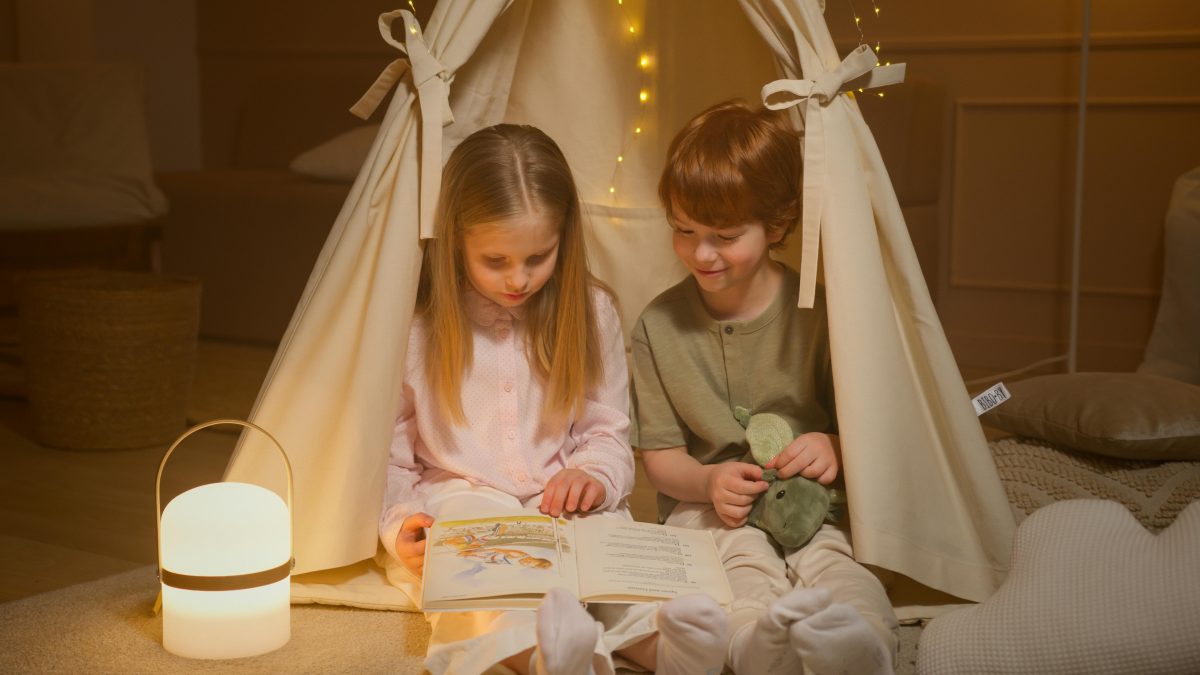An Overview of Developing Children’s Curiosity

A strong, motivating factor at the center of every child’s development is curiosity. This natural curiosity to learn about the world is not merely a phase that passes; rather, it is an essential element that drives social skill development, emotional maturation, and cognitive development. We create the groundwork for a lifetime of learning and exploration by fostering this curiosity. The advantages are numerous and include everything from empathy and interpersonal comprehension to problem-solving skills. Remember, as we dive into the tactics to support this innate tendency, the objective is to light a spark that will illuminate their entire educational journey and turn learning into an adventure they can’t wait to go on.
The Value of a Space That Encourages Curiosity
It’s critical to create an environment that encourages curiosity. Children can explore fearlessly in safe and easily accessible areas, which helps them develop a sense of independence. Their learning environment is enhanced by the inclusion of a range of materials and resources, including books, art supplies, and natural elements. Their senses are stimulated by this diversity, which also motivates them to look for answers and pose questions.
Promoting Inquiry via Unrestricted Play
- Unrestricted play serves as a means of exploration. Curiousity is stimulated by games and activities that don’t have a clear result, like creative playsets, building blocks, and art supplies.
- They enable kids to try new things, figure out challenges, and express themselves artistically.
- With a vast amount of information at their fingertips, technology and digital resources play an important role that cannot be understated. To guarantee a balanced exposure to both digital and physical learning experiences, screen time management is essential.
We nurture our children’s innate curiosity by providing resources that pique their interest and carefully arranging spaces that promote exploration. This method builds a strong foundation for their future academic endeavors while also enhancing their current developmental stage. Recall that the goal is to foster an atmosphere where learning is engaging and enjoyable in addition to being instructive.
Setting an Example to Inspire Curiosity

Modeling Curiosity’s Power
Little ones frequently mimic the behaviors and attitudes of those around them because they are natural mimics. By expressing your own inquiries and passions, you both satisfy their curiosity and show that learning is a lifelong process. Whether you’re searching the internet or reading books for information, showcasing your research and discovery methods sets a powerful example. It instills in them the idea that asking questions and getting answers are equally vital.
Participating in Activities Collectively
- A child’s comprehension and memory of knowledge can be greatly improved through hands-on projects and experiments that promote collaboration.
- Collaborating on an intricate science experiment or a basic baking project that teaches chemical reactions and measurements can both ignite a passion for exploration.
- Learning-focused family excursions, like trips to museums or nature preserves, are priceless. These encounters offer a rich context for education, bringing abstract ideas to life and simplifying their understanding.
- In particular, museums provide a wealth of opportunities to study art, science, and history, igniting passions that may last a lifetime.
- Walking in the natural world promotes observation and questioning, two abilities that are essential to the scientific process.
Engaging in these activities with your child helps them feel more connected to you and reinforces the fun and excitement of learning. Recall that the intention is to create a shared, enjoyable, and engaging learning environment that goes beyond the classroom.
To get additional inspiration for interesting activities, visit the The extensive resources available on the Questacon website can encourage you and your child to investigate the wonders of science together.
Promoting Storytelling and Reading

Cultivating a Passion for Reading
Fostering a love of reading starts at home with setting up a space that is conducive to reading. This entails stocking a cozy nook with a selection of books so your kids can curl up with a book. It’s important to select books that align with your child’s interests and reading level. It transforms reading from a tedious task into an enjoyable exploration journey.
The Storytelling’s Function in Imagination Stimulation
- Storytelling is an art form that fosters creativity and imagination, and it goes beyond simply reciting passages from books.
- Telling life stories can add a depth and intimacy to the storytelling experience.
- Children gain empowerment when they are encouraged to create and tell their own stories. It offers them a voice and unleashes their creativity.
You’re not only providing your child with entertainment when you incorporate storytelling and reading into everyday routines. You’re expanding their vocabulary, exposing them to new worlds, and improving their narrative abilities. As a result, they have a strong foundation for the future and are constantly excited to learn new things. Recall that the objective is to kindle in them a creative and inquisitive spirit that will illuminate their academic path and turn every day into a learning experience.
Reducing Overbooking and Embracing Idleness

The Drawbacks of Having a Full Schedule
A child’s natural curiosity may be stifled by an excessively packed schedule, even though a structured day can offer stability. It’s critical to find equilibrium. Overscheduling reduces the opportunity for impromptu exploration and increases stress and burnout. It is through this exploration that creativity and curiosity are developed.
Recognizing the Value of Leisure Time
- Time off is not merely a space in the schedule, but rather an opportunity for development.
- It inspires kids to interact with the world in novel ways and gives them the opportunity to process their experiences.
- Children need this unstructured time to explore their interests at their own pace, which is essential for fostering creativity.
The Advantages of Idleness
Despite popular belief, boredom is not a bad thing. It stimulates creativity and introspection. When kids are left on their own, they develop their ability to amuse themselves, which inspires creative thinking and personal development. Children who are bored are pushed to explore their interests more, which fosters creativity and invention.
Tips for Supervising Kids During Downtime
Encouraging kids to pursue their interests when they have free time does not imply that they should be busy all the time. It’s more important to give them the tools and chances to explore instead. Providing them with access to books, art supplies, or outdoor areas could be a simple way to accomplish this. To help them turn their curiosity into a learning journey, encourage them to ask questions and look for answers.
Recall that the objective is to harness boredom as a tool to promote creativity and self-directed learning rather than to eradicate it. We can support children in creating a rich inner life that satisfies their curiosity and creativity by striking a balance between structured activities and unstructured exploration.
Supplementary Materials

Recommended Books, Websites, and Additional Reading Materials
Starting a curious journey together with your child is an ongoing adventure. Explore a range of age- and interest-appropriate books to help them on this journey. There is a wealth of information available on websites such as National Geographic Kids that can pique children’s curiosity about the world. The Australian Museum website offers informative resources that make learning interesting and enjoyable for a deeper dive into particular topics.
Providing Links to Resources and Toys That Encourage Curiosity
- With the correct resources, converting playtime into learning time is simple. Toys with educational value, like those available at With Fat Brain Toys, curiosity and problem-solving are encouraged.
- The Science Museum Shop provides science kits and gadgets that are entertaining and approachable for aspiring scientists.
These resources make every play session an educational opportunity because they are both entertaining and educational.
Asking Readers to Comment or Use Social Media to Share Their Own Stories and Advice
Your path of fostering your child’s curiosity is distinct and rich with learning opportunities. Others can be motivated and assisted on their journey by hearing about your experiences and advice. Post a comment below or get in touch with us on social media to interact with our community. Your tale might be the catalyst for igniting a different child’s enthusiasm for education. Together, let’s establish a lively community of inquisitive scholars to explore the world.
Recall that the goal is to foster an atmosphere where learning is engaging and enjoyable in addition to being instructive. By making use of these resources, you’re opening doors to a world of limitless possibilities in addition to giving students tools for learning. Together, let’s set out on this journey to help our kids develop a lifelong love of learning.
In Conclusion
Encourage your child’s curiosity so it will grow in the future. This journey builds a resilient learner by fusing happiness and discovery. We create the foundation for a lifetime of learning, creativity, and innovation by creating an atmosphere that welcomes inquiries and exploration. Let’s make a commitment to fostering our kids’ innate curiosity and pointing them in the direction of a world full of opportunities and the excitement of lifelong learning.
Tips for Encouraging Your Child’s Natural Curiosity FAQs
Encourage your child to ask more questions by actively listening and responding with enthusiasm when they express curiosity about something. Show interest in their inquiries and guide them to find answers together, which reinforces their natural desire to learn and explore. This approach helps them feel valued and more inclined to keep questioning the world around them.
Encourage your child to explore the world around them by taking them on walks, visits to museums, parks, and other educational outings that expose them to new experiences. These activities provide sensory experiences that are vital for learning and can spark questions and discussions about the natural and built environment. Being an active participant in these explorations with your child shows them that curiosity and learning are lifelong pursuits.
Help your child turn failures into learning opportunities by framing mistakes as a natural part of the learning process. Discuss what went wrong, what can be learned from the experience, and how to approach similar situations in the future, which teaches resilience and problem-solving skills. This mindset encourages children to see challenges as opportunities to grow and learn, rather than as setbacks.
Technology can be a powerful tool to foster curiosity in children when used appropriately, by providing access to a vast array of information and interactive learning opportunities. Educational apps, games, and websites can introduce new subjects in a fun and engaging way, encouraging further exploration. However, it’s important to guide your child’s technology use, ensuring it’s balanced with offline activities and that digital content is age-appropriate and educational.
Creating a curiosity-friendly environment at home involves providing resources and spaces that encourage exploration and learning. This can include access to books, art materials, science kits, and technology, as well as creating safe spaces where children feel free to experiment and ask questions. It’s important to make these resources easily accessible and to have areas where children can engage in activities without fear of making a mess or breaking things.
Support your child’s curiosity without overwhelming them by following their lead in learning and exploring new topics at their own pace. Offer a variety of resources and experiences, but let them choose what interests them most, providing guidance and information as needed. This approach allows children to develop their interests naturally without feeling pressured or overloaded with information.
Engaging in open-ended play activities, such as building with blocks, experimenting with art supplies, or exploring nature, can greatly stimulate your child’s curiosity. These activities allow children to use their imagination, make discoveries on their own, and learn through trial and error, which are all critical components of fostering a curious mind. They encourage children to ask “what if” and “how” questions, pushing them to think creatively and critically.
Asking open-ended questions to children is important because it encourages them to think more deeply and express their thoughts and ideas in detail. These types of questions cannot be answered with a simple “yes” or “no,” prompting children to explore their knowledge and opinions, which fosters critical thinking and language skills. It also shows children that their thoughts are valued, boosting their confidence and willingness to engage in conversations.
Reading plays a significant role in encouraging curiosity by exposing children to new ideas, cultures, and perspectives they might not encounter in their daily lives. Through stories and information books, children learn to ask questions about characters, settings, and facts, which can lead to further exploration and learning. Additionally, reading together provides an opportunity for discussion, allowing you to model curiosity and critical thinking skills.
To keep your child’s curiosity alive as they grow older, continue to provide challenging and diverse experiences that stretch their understanding and skills. Encourage them to pursue their interests deeply, whether through advanced studies, hobbies, or extracurricular activities, and support them in setting and achieving their own learning goals. Maintaining an environment where questions are encouraged and celebrated, and where learning is seen as a fun and ongoing process, is key to nurturing a lifelong love of discovery.

